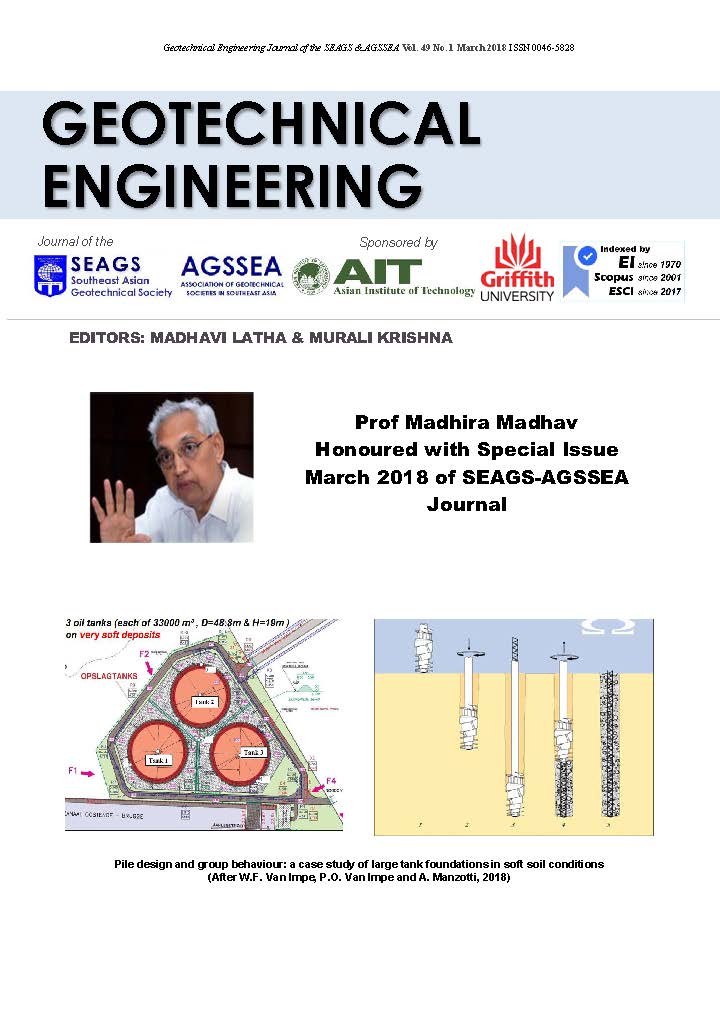Evaluation of Resilient Modulus of Geosynthetic Reinforced Layers Using Repeated Load Triaxial Tests
Main Article Content
Abstract
The stiffness and strength of the pavement layers are the major parameters that influence the design of highway pavements which in turn decides the thickness of various pavement layers. Studies have shown that the thickness of the base layer plays a crucial role in limiting the rutting of the in situ subgrade soil. Due to the lack of availability of aggregates, there is a dire need to minimize the thickness of the base. Geosynthetics in the form of geogrid and geocell have long been used for reinforcing unbound base/subbase layers in paved and unpaved roads and have been found to be effective in reducing the base thickness. A few laboratory studies have been conducted to evaluate the different aspects of geosynthetic reinforced base layers, and further studies are required to examine the behavior of these reinforced sections under elastic and plastic shake down range. The purpose of the current study is to evaluate and compare the resilient modulus of geogrid reinforced, geocell reinforced and the unreinforced granular base under repeated loading using the Repeated Load Triaxial tests. The response of aggregate under repeated loading expressed in terms of resilient modulus is a key parameter in the new Mechanistic Empirical Pavement Design Guide (MEPDG). The permanent strains of aggregates are also compared in the study to get an overall idea about the reinforcement effect in the granular base.
Article Details

This work is licensed under a Creative Commons Attribution-NonCommercial-NoDerivatives 4.0 International License.
Copyright © 2019 Association of Geotechnical Societies in Southeast Asia (AGSSEA) - Southeast Asian Geotechnical Society (SEAGS).


